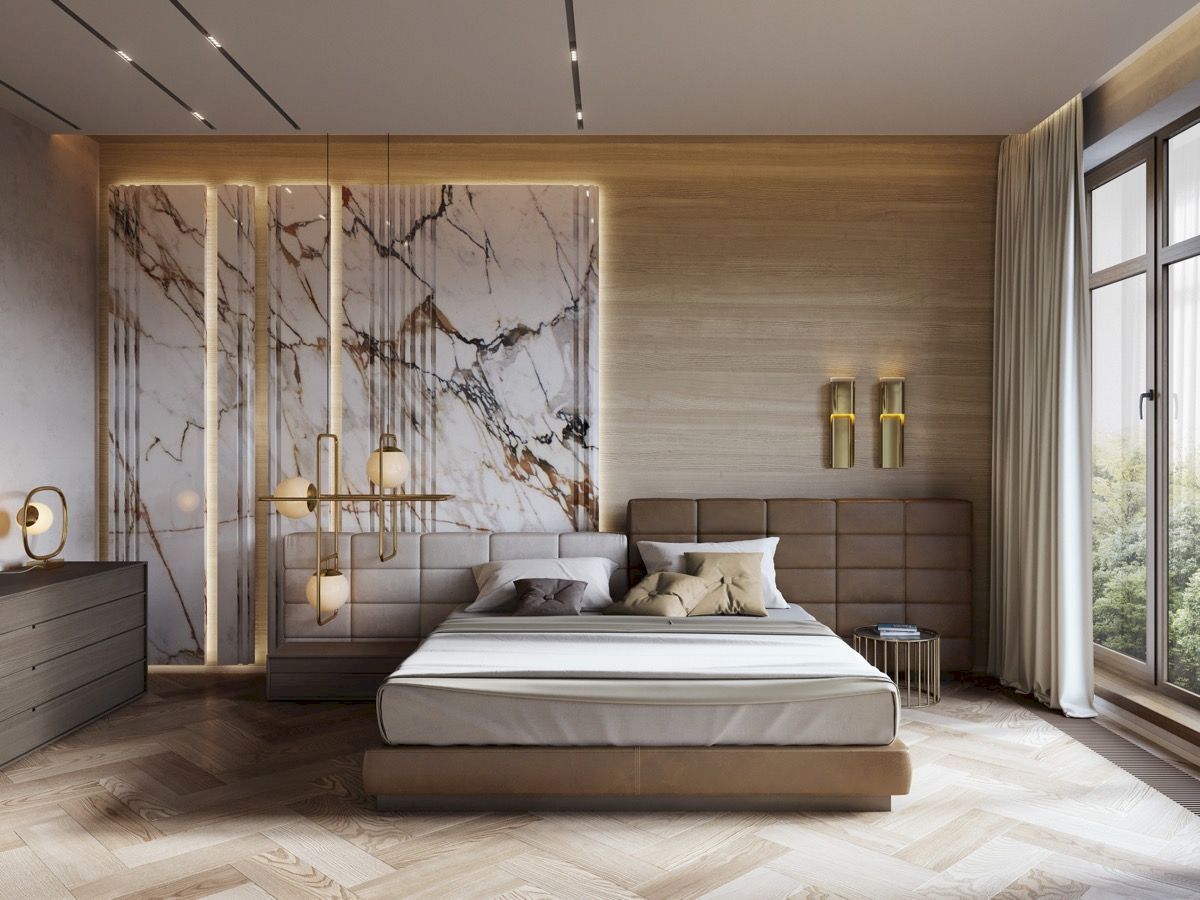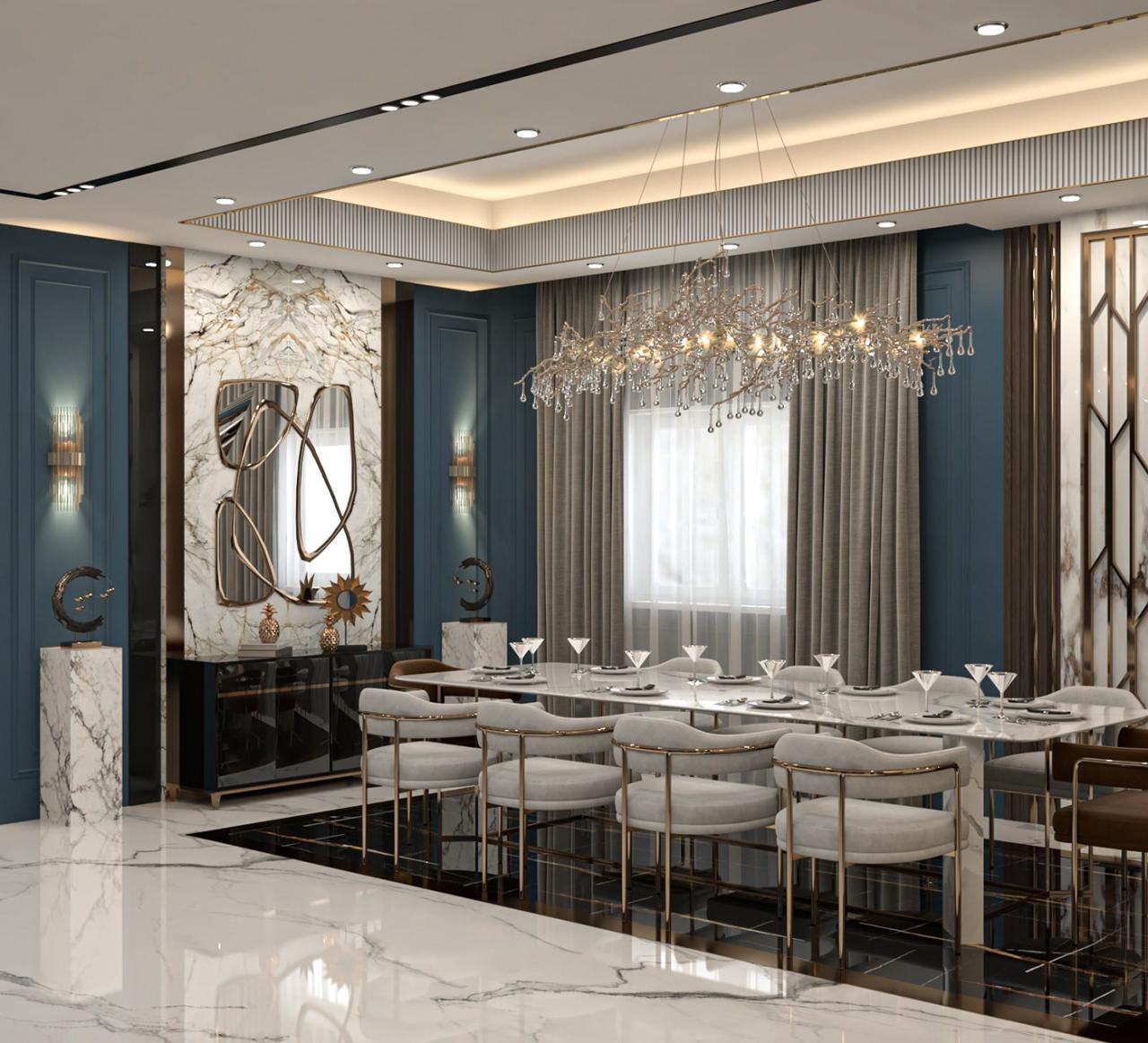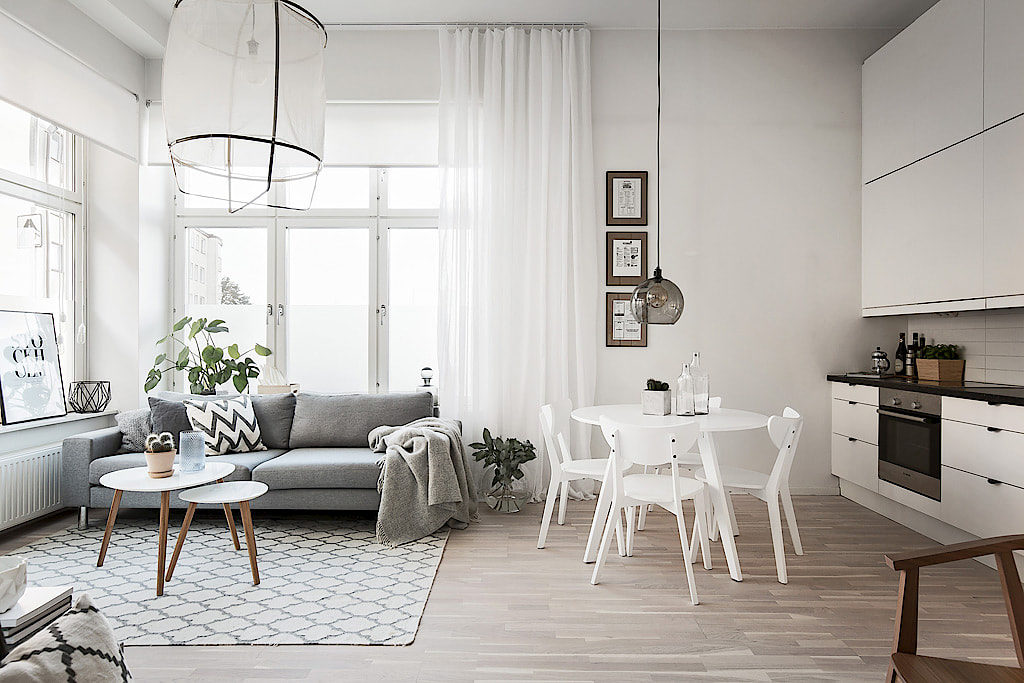French country dining room design is all about creating a warm, inviting space that feels both elegant and cozy. Imagine a room filled with rustic charm, rich colors, and comfortable furnishings, perfect for hosting family dinners or intimate gatherings. This guide dives deep into the details, from choosing the perfect furniture to crafting the perfect ambiance.
We’ll explore the key elements that define this style, including furniture, colors, textures, and lighting, and compare it to similar styles like farmhouse or rustic. We’ll also provide practical tips for making your French country dining room both beautiful and functional.
Defining French Country Dining Room Style
A French country dining room evokes a sense of warmth and charm, drawing inspiration from the rustic beauty of French countryside homes. It’s a style that blends elegance with a relaxed, inviting atmosphere. The key is to create a space that feels lived-in, yet stylish and sophisticated.
The French country aesthetic is characterized by a blend of natural materials, soft colors, and charming details, all working together to create a welcoming and comfortable dining experience. It differs from other styles like farmhouse or rustic by its emphasis on sophistication and subtle elegance, rather than raw, unfinished materials.
Aesthetic Characteristics
The French country aesthetic blends elements of classic French design with the natural beauty of the countryside. Key features include the use of natural light, warm colors, and textures that evoke a sense of comfort and ease. Furniture pieces often feature intricate carvings or simple, clean lines. The overall impression is one of timeless elegance and understated luxury.
Key Elements
The style is defined by specific elements in furniture, colors, textures, and patterns. A common characteristic is the use of light, warm colors like cream, beige, and soft blues, often accented with deeper tones like terracotta or olive green. Natural wood tones, such as oak or pine, are frequently used for furniture. Textures like linen, cotton, and wool are prominent in upholstery and tablecloths. Patterns like floral prints, stripes, and gingham are also often incorporated, but in a subtle and tasteful manner.
Comparison with Farmhouse and Rustic Styles
While all three styles embrace natural elements, French country distinguishes itself through its refined approach. Farmhouse style often leans towards a more rustic, slightly rougher aesthetic, with a focus on simple, functional furniture. Rustic style emphasizes raw materials and a more minimalist approach. French country sits in the middle, balancing the charm of natural materials with a touch of sophistication.
Color Palettes
Common color palettes in French country dining rooms include:
- Creamy whites and beiges with accents of terracotta or olive green.
- Soft blues and greens with warm, natural wood tones.
- Pale pinks and lavenders paired with warm browns and golds.
These palettes create a welcoming and inviting atmosphere, while still maintaining a sense of elegance.
Materials
The style heavily utilizes natural materials for furniture and decor:
- Wood: Oak, pine, and other light-toned woods are common choices for tables, chairs, and other furniture.
- Fabric: Linen, cotton, and wool are frequently used for upholstery and table linens.
- Metal: Wrought iron or painted metal accents add a touch of elegance.
- Stone: Stoneware or stone-topped tables contribute to a natural and rustic charm.
These materials create a harmonious blend of beauty and durability.
Table Layout
A French country dining table layout should reflect the relaxed and welcoming atmosphere of the space.
| Item | Placement |
|---|---|
| Dining Table | Centered in the room, allowing for ample space around it. |
| Chairs | Matching or complementary chairs arranged around the table, with soft cushions and linen seat covers for a comfortable dining experience. |
| Centerpiece | A low centerpiece featuring fresh flowers, candles, or a collection of decorative items. |
| Lighting | Soft, warm lighting is essential. Chandeliers or sconces with warm-toned bulbs create a welcoming ambiance. |
The overall effect should be one of elegant simplicity, with a focus on creating a comfortable and inviting space for gathering.
Furniture and Decor Elements: French Country Dining Room
A French country dining room exudes a warm, inviting atmosphere, achieved through a careful blend of rustic charm and refined elegance. Key elements like furniture, lighting, and textiles play a vital role in establishing this distinctive style. The furniture pieces, often handcrafted or with an antique look, are carefully chosen to complement the overall aesthetic.
The design emphasizes comfort and functionality, ensuring that the dining experience is both pleasing and practical. The combination of these elements creates a space that’s both beautiful and welcoming for family gatherings and intimate dinners.
Dining Tables
Dining tables are a central feature in any dining room, and the French country style favors sturdy, often large tables, that can accommodate large gatherings. These tables are typically made of wood, showcasing natural wood grain and often featuring a simple, elegant design. Examples include farmhouse tables with exposed beams, or round tables with a simple, elegant design. The table’s size and shape should be carefully considered to accommodate the space and the anticipated number of diners.
Dining Chairs
Chairs complement the table, contributing to the overall aesthetic. French country chairs frequently feature a comfortable seat and back, often with simple carvings or decorative details. They often have a solid construction and are made of wood, emphasizing the natural material. The style leans towards a comfortable design rather than ornate details. Matching sets are common but not mandatory. Chairs can be upholstered with linen or cotton fabrics, further enhancing the room’s warm, inviting ambiance.
Other Important Pieces
A sideboard or buffet, often crafted from wood with visible grain, is another key element. It provides ample storage for dishes, silverware, and other dining essentials. A hutch or china cabinet, similar in style, might be used to display fine china and glassware. These pieces contribute to the overall storage and decorative functionality of the space.
Lighting Fixtures
Lighting fixtures play a crucial role in setting the mood. Chandeliers or pendant lights with simple, elegant designs, possibly featuring iron or wood accents, are often chosen. These fixtures should be warm-toned and diffused to avoid harsh shadows. Wall sconces or lanterns positioned near the table can also provide additional illumination. A good mix of ambient and task lighting creates a comfortable atmosphere for dining.
Textiles
Textiles add a layer of warmth and texture. Tablecloths, napkins, and curtains often feature linen, cotton, or other natural fabrics in neutral colors like cream, beige, or muted blues and greens. These fabrics create a sense of softness and texture in the space. These textiles are often patterned with subtle floral designs or have a simple, unadorned look, in keeping with the French country aesthetic.
Decorative Accents
Artwork, pottery, and wall hangings contribute to the room’s character. Artwork might include framed prints or paintings with pastoral scenes, floral motifs, or rustic themes. Rustic pottery or porcelain items can be displayed on shelves or mantelpieces. Wall hangings, such as tapestries or embroidered pieces, can further enhance the rustic feel of the room.
Decorative Accessories
A range of decorative accessories can be used to create a unique French country dining room feel. Consider adding antique-style candlesticks, woven baskets, wooden trays, and ceramic figurines to complement the existing furniture and decor. These accessories add personality and warmth to the space, while maintaining a consistent design theme.
Color Schemes and Palettes
Choosing the right color palette is crucial in creating a French country dining room that feels welcoming and stylish. Colors evoke emotions and significantly impact the ambiance of the space. A well-chosen color scheme can enhance the charm of the room, making it a comfortable and enjoyable place for meals and gatherings.
Color Palette Examples
Different color palettes can achieve various moods in a French country dining room. The following table demonstrates some options, highlighting the interplay between primary colors, accent colors, and the overall impression each palette creates.
| Palette Name | Primary Colors | Accent Colors | Overall Impression |
|---|---|---|---|
| Rustic Charm | Cream, beige, light brown | Mustard yellow, terracotta, deep burgundy | Warm, inviting, and cozy, evoking a sense of rustic charm and timeless elegance. |
| Lavender Fields | Soft white, light gray | Lavender, pale blue, light green | Light, airy, and serene, creating a feeling of tranquility and openness. |
| Warm Honeycomb | Honey gold, creamy beige | Deep brown, burnt orange, taupe | Inviting and sophisticated, suggesting warmth and comfort. |
| Provençal Sunshine | Pale yellow, light peach | Deep teal, olive green, burnt sienna | Bright, cheerful, and optimistic, embodying the spirit of the French countryside. |
Warm Earthy Tones
Warm, earthy tones, such as terracotta, mustard yellow, and deep browns, are characteristic of French country style. These colors create a welcoming and cozy atmosphere. They often evoke a sense of nostalgia and comfort, drawing inspiration from the natural world. Using these tones can make the room feel grounded and inviting.
Incorporating Pops of Color
Adding pops of color to a predominantly neutral palette can elevate the design. Accent colors like deep blues, vibrant greens, or rich reds can create focal points within the room, without overwhelming the space. These accents can highlight specific features, such as a statement piece of furniture or artwork.
Color and Space Perception
Light colors tend to make a room feel larger and brighter, while darker colors can make a room feel more intimate and cozier. Strategic use of color can significantly impact the perceived size and feel of the space. For example, using light-colored walls and furniture can visually expand a smaller dining room.
Popular Color Combinations
Popular and successful color combinations for French country dining rooms include:
- Creamy whites paired with warm browns and muted golds.
- Soft blues and greens with natural wood tones.
- A mix of light and dark wood tones with muted pastel colors.
These combinations evoke a sense of balance and harmony, enhancing the overall aesthetic appeal of the room.
A Specific Color Scheme Example
A color scheme using a palette of soft white, pale gray, and various shades of sage green can create a serene and tranquil dining experience. The soft white walls would create a sense of spaciousness, while the sage green accents on furniture and accessories would add a touch of freshness and calm. This color scheme is suitable for a dining room that aims to promote relaxation and conversation.
Materials and Textures
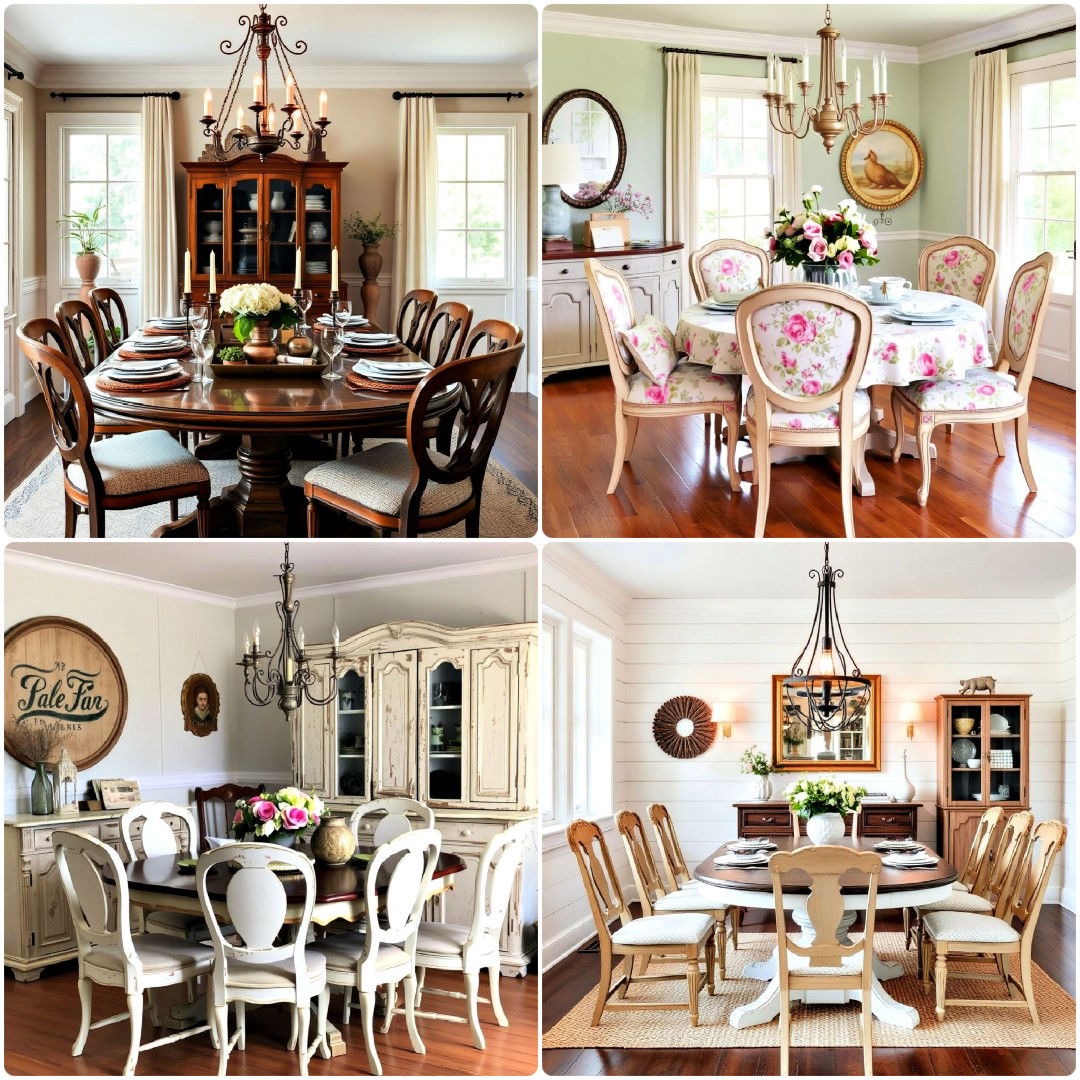
Source: suite101.com
The materials and textures used in a French country dining room are crucial to achieving that warm, inviting, and authentic feel. Careful selection of wood, fabrics, and other elements creates a sense of rustic charm and enduring quality. The choice of materials significantly impacts the visual appeal and overall atmosphere of the space.
The interplay of various textures, from the smooth sheen of polished wood to the rough hewn feel of stone, adds depth and visual interest. Natural materials, with their inherent variations in color and grain, contribute to a sense of warmth and authenticity. The use of natural finishes often evokes a connection to the outdoors, while painted finishes can add a touch of elegance and a tailored look.
Types of Wood
Choosing the right wood is key to establishing the French country style. Common choices include oak, pine, and chestnut. Oak, with its robust grain and rich tones, often serves as a foundational material for tables, chairs, and other furniture pieces. Pine, a more affordable option, offers a lighter, more versatile look, while chestnut brings a warm, earthy aesthetic. The variations in wood grain and color are integral to the room’s overall character. Different woods evoke different moods, and understanding these subtleties enhances the overall design.
Fabrics and Textiles
Textiles play a significant role in defining the French country aesthetic. Linen, cotton, and wool are frequently used for upholstery, tablecloths, and napkins. Linen’s natural drape and slightly rough texture contribute to a relaxed, casual feel. Cotton offers a more versatile choice, while wool’s warmth and durability are perfect for adding layers and comfort. Patterns like floral prints, stripes, and checks are often incorporated into these textiles, adding visual interest and a sense of handcrafted charm. Consider the interplay between the fabrics and the wood tones to create a cohesive design.
Natural Finishes
Natural finishes, such as those left on wood, showcase the inherent beauty of the material. These finishes emphasize the wood’s natural grain, lending a warm and inviting ambiance. Natural finishes also create a sense of authenticity and connection to nature. For example, a weathered oak table with visible knots and imperfections could add a touch of rustic charm to a dining room.
Painted Finishes
Painted finishes offer a way to customize the look of the dining room. Light, airy colors such as cream, pale yellow, or light blue can evoke a sense of serenity. Deeper colors like a warm taupe or a rich, muted green can add a touch of sophistication and visual depth. Painted finishes allow for a tailored look that complements the natural elements of the space. Consider how painted finishes can enhance the dining room’s overall visual appeal.
Natural Elements
Natural elements, such as stone or wicker, are frequently incorporated into French country dining rooms. Stone, used in flooring, hearth surrounds, or decorative accents, brings a sense of grounded stability and rustic charm. Wicker baskets or chairs can introduce a touch of breezy, casual charm, particularly when combined with natural wood elements. The inclusion of natural elements helps create a connection to the outdoors, fostering a sense of peace and authenticity. These elements enhance the overall visual appeal and sensory experience of the space.
Varying Textures
The interplay of varying textures adds depth and visual interest to the space. The contrast between smooth, polished surfaces and rough, textured materials creates a captivating visual experience. For example, a table with a smooth, polished top contrasted with a rustic, wooden base creates a visually appealing and well-balanced look. Consider how the juxtaposition of different textures can enhance the overall feel of the dining room.
Lighting and Ambiance
Creating the right ambiance in a French country dining room is crucial for a warm and inviting atmosphere. Lighting plays a pivotal role in shaping the mood and setting the stage for memorable meals and gatherings. Careful consideration of different light sources, from ambient to accent, is key to achieving the desired effect.
Types of Lighting
Various lighting types are essential for a well-lit French country dining room. Layering different light sources creates depth and visual interest, ensuring the space feels welcoming and inviting. Ambient lighting provides overall illumination, task lighting focuses on specific areas, and accent lighting highlights architectural features or decorative elements.
Placement Suggestions for Different Light Types
- Ambient lighting should be strategically positioned to illuminate the entire dining area. Chandeliers, recessed lighting, or a combination of both can serve as effective ambient light sources. For example, a beautiful crystal chandelier hanging over the dining table creates a dramatic and sophisticated focal point.
- Task lighting is particularly important for the dining table. Sconces or pendant lights hung directly above the table, or strategically placed table lamps, facilitate comfortable dining by providing focused illumination on the dinnerware and the individuals seated around the table. This also enhances the visual appeal of the table setting.
- Accent lighting can highlight architectural details, artwork, or decorative elements within the room. Wall sconces, picture lights, or strategically placed floor lamps can add depth and dimension to the space. For instance, highlighting a decorative fireplace or a collection of antique plates can draw the eye to specific points of interest within the dining room.
Effect on Ambiance, French country dining room
| Light Type | Placement Suggestions | Effect on Ambiance |
|---|---|---|
| Ambient | Chandeliers, recessed lighting | Creates a general, warm glow, making the room feel welcoming and spacious. |
| Task | Table lamps, pendant lights over table | Provides focused illumination for tasks like eating or reading, enhancing functionality and comfort. |
| Accent | Wall sconces, picture lights, floor lamps | Highlights architectural details, artwork, or decorative elements, adding depth and visual interest. |
Candles and Soft Light Sources
Candles and other soft light sources play a vital role in creating a warm and inviting atmosphere. They add a touch of romance and intimacy, enhancing the overall ambiance of the dining room. Using candles in various sizes and styles, such as pillar candles, votive candles, or hurricane lamps, adds a touch of elegance and sophistication. These soft light sources can be strategically placed on tables, mantles, or windowsills, creating a warm and inviting ambiance, particularly during evening meals.
Natural Light
Natural light is an important component of a French country dining room. Maximize natural light by using sheer curtains or blinds that allow light to filter into the space while providing privacy. Strategic placement of furniture can also maximize the use of natural light. Large windows or skylights can be incorporated to bring in ample natural light, creating a bright and airy atmosphere. In addition, lighter color palettes and reflective surfaces can further enhance the impact of natural light.
Lighting Fixtures Reflecting French Country Style
Lighting fixtures in a French country dining room should reflect the style’s emphasis on warmth, charm, and elegance. Consider using wrought iron chandeliers or sconces, or lanterns for a touch of rustic charm. Antique-style or farmhouse-inspired pendant lights can add a unique touch. The use of warm-toned bulbs will also complement the overall design and ambiance of the room. Examples include fixtures with intricate details, such as carvings or floral patterns, or fixtures with a rustic metal finish.
Practical Considerations for a French Country Dining Room
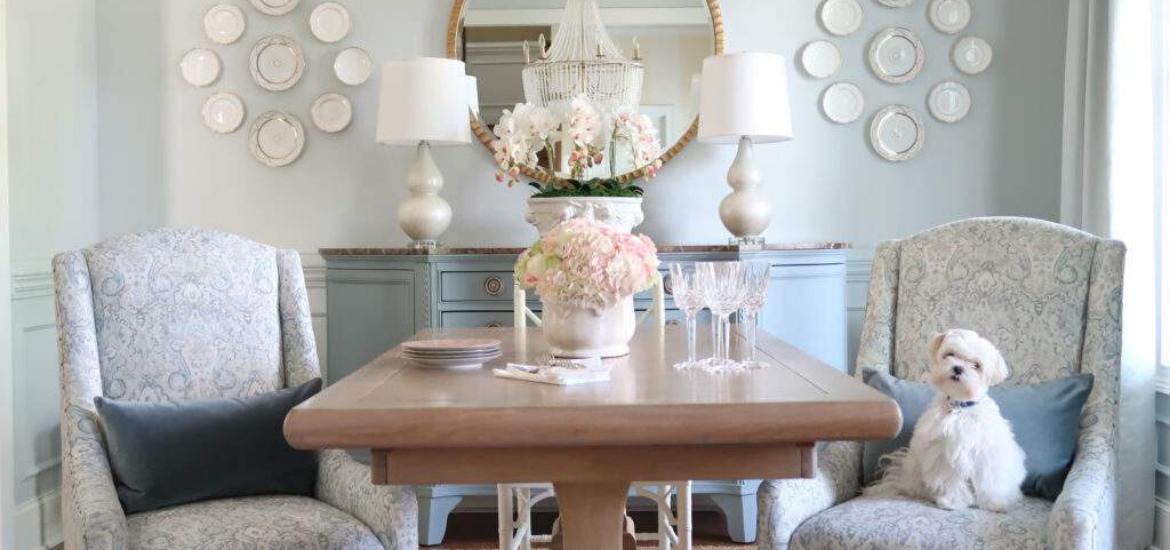
Source: sebringdesignbuild.com
A French country dining room, while beautiful and inviting, needs to be functional. It’s a space for everyday meals, entertaining, and family gatherings. Therefore, practical design elements are crucial to making the space truly enjoyable and usable. Balancing the aesthetic appeal of the style with the demands of daily life is key to creating a truly livable French country dining room.
Practicality doesn’t mean sacrificing style; it’s about integrating thoughtful design choices that enhance both the beauty and functionality of the room. A well-designed French country dining room can seamlessly blend elegance with everyday practicality, creating a space that’s both beautiful and highly usable.
Layout Considerations
The layout of the dining room significantly impacts its usability. A spacious layout allows for comfortable movement and placement of furniture, enhancing the overall dining experience. A more compact space requires careful planning to ensure efficient use of available room. Consider the flow of traffic around the table and other furniture pieces to prevent bottlenecks. Also, ensure sufficient space for guests to move around comfortably. Open floor plans often enhance the sense of spaciousness.
Storage Solutions
Practical storage is vital in a French country dining room. Open shelving, painted cabinets, and decorative baskets are ideal choices for keeping the room clutter-free while maintaining the French country aesthetic. Use of built-in cabinetry, incorporating traditional French country design elements, provides concealed storage, keeping the room uncluttered and the desired style intact. Choose storage solutions that complement the room’s overall design and color scheme.
Incorporating Modern Conveniences
Modern conveniences like dishwashers, microwaves, and garbage disposals can significantly improve the functionality of a kitchen, especially when a dining room is part of the kitchen/dining space. Incorporating these features can simplify meal preparation and cleanup. Integrating modern appliances seamlessly into the French country style is achievable by carefully selecting appliances with a design that harmonizes with the existing aesthetic. Consider appliances with a painted finish or those that have a subtle, neutral design to avoid clashing with the room’s color palette and decor.
Space Optimization
Maximizing the space in a French country dining room is important for maximizing its functionality. Clever use of space can create a feeling of spaciousness and comfort, even in a smaller room. Mirrors strategically placed can reflect light, making the room appear larger. Use of multi-functional furniture can save space. A large, but narrow dining table, for example, can save space without sacrificing seating capacity. A dining table with a drop leaf can provide additional seating when needed, while maintaining a compact design when not in use.
Inspiration and Visual Examples
French country dining rooms offer a charming blend of rustic elegance and cozy comfort. They are a great way to create a welcoming atmosphere for family and friends. Drawing inspiration from these designs can help you tailor your own French country dining room to perfectly suit your style and needs.
To truly grasp the essence of French country design, it’s crucial to examine numerous examples. Visual comparisons and detailed descriptions will allow you to identify key elements and translate them into your own project.
Comparing Different French Country Dining Room Designs
Different interpretations of French country style exist, each with its own unique character. Comparing various designs provides insight into the diverse possibilities and allows for informed choices.
| Room Style | Key Features | Overall Impression |
|---|---|---|
| Rustic Elegance | Exposed beams, natural wood tones, simple but well-made furniture, floral accents | Warm, inviting, and grounded |
| Charming Countryside | Hand-painted furniture, light-colored walls, natural textiles, wrought iron details | Whimsical, lighthearted, and filled with character |
| Sophisticated French Country | More refined furniture, richer colors, detailed carvings, and elegant lighting | Luxurious, refined, and timeless |
Image Descriptions of French Country Dining Rooms
These descriptions offer visual representations of different French country dining room designs.
Image 1: A rustic dining room features a large wooden table with a simple, slightly distressed finish. The chairs are upholstered in a linen-like fabric in a light beige. The walls are painted a soft cream color, complementing the natural wood tones of the floor and the exposed beams. A floral tablecloth adds a touch of warmth. The overall ambiance is warm and inviting, creating a relaxed and cozy atmosphere.
Image 2: This dining room showcases hand-painted furniture with cheerful floral patterns in shades of blue, green, and yellow. The walls are painted a pale yellow, creating a light and airy feel. The furniture is complemented by a simple wooden table and a chandelier with wrought iron accents. The overall impression is one of a whimsical and inviting space, perfect for a casual gathering.
Image 3: A sophisticated French country dining room features a dark wooden table with intricate carvings. The chairs are upholstered in rich velvet fabric in a deep burgundy. The walls are painted a soft gray-blue, enhancing the luxurious feel. A large, crystal chandelier adds to the elegance of the space. The ambiance is both sophisticated and cozy, perfect for formal occasions.
Examples of Successful French Country Dining Room Designs
Successful French country dining rooms seamlessly blend elements to create a cohesive and inviting space. Careful attention to detail, the selection of appropriate colors, and the proper use of textures and patterns are crucial for achieving this look.
A well-executed design typically includes a mixture of natural materials, like wood and linen. The colors are often soft and muted, ranging from warm creams and beiges to gentle blues and greens. The use of floral patterns and prints is common, often appearing in textiles and tableware, adding a touch of elegance and character. Well-chosen lighting fixtures, such as chandeliers or sconces, enhance the ambiance.
Design Elements from Images That Work Well
These elements contribute to the charm and appeal of French country dining rooms.
- Natural materials, like wood and linen, create a warm and inviting atmosphere.
- Soft color palettes, such as warm creams and beiges, and gentle blues and greens, contribute to a calming and elegant feel.
- Floral patterns and prints add a touch of elegance and character to the space.
- Proper lighting fixtures, such as chandeliers or sconces, enhance the ambiance and draw attention to the room’s features.
Key Principles of Design in the Examples
These principles underpin the success of French country dining room designs.
- A harmonious blend of rustic and refined elements.
- Thoughtful use of color and texture to create a cozy and welcoming atmosphere.
- The use of natural light and well-placed lighting fixtures to enhance the room’s ambiance.
- Careful selection of furniture pieces that complement each other and reflect the overall design theme.
Wrap-Up
In conclusion, a French country dining room offers a unique blend of style and practicality. By carefully considering the furniture, colors, and materials, you can create a space that reflects your personal taste while maintaining a welcoming atmosphere for your loved ones. We hope this guide has provided you with inspiration and practical advice to design your dream French country dining room.
FAQ Overview
What are some common wood types used in French country furniture?
Oak, pine, and cherry are frequently used for their warm tones and rustic appeal. Sometimes you’ll see painted finishes, too.
What kind of lighting is best for a French country dining room?
A combination of ambient, task, and accent lighting is ideal. Chandeliers, sconces, and table lamps are common choices that add to the ambiance.
How can I incorporate modern conveniences without sacrificing the French country aesthetic?
Modern appliances can be hidden or styled to blend with the overall design. For example, a well-chosen, sleek refrigerator or dishwasher could be easily incorporated.
What are some popular color palettes for French country dining rooms?
Warm earthy tones like beige, cream, and terracotta are common. However, pops of color like navy, emerald green, or deep red can add visual interest.
- Kerugian X Terus Meningkat seiring Meluasnya Boikot Pengiklan - November 11, 2025
- Solusi untuk Akses Yandex Com Yandex Browser Jepang Yandex yang Diblokir! - November 11, 2025
- Download Ome TV Mod APK No Banned + Ads Girl Version 2025 - November 11, 2025


